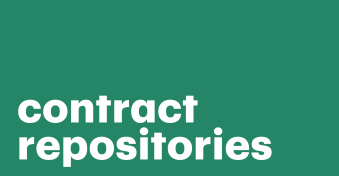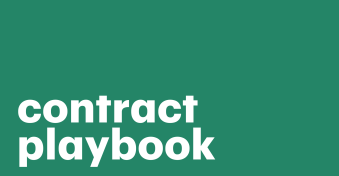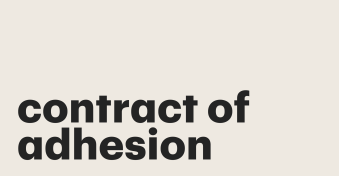Contract AI promises to help businesses cut on admin costs and time by helping generate, review and track contracts.
This is done through the automation of many repetitive admin tasks, allowing people to focus more intently on higher level priorities. Businesses, startups, and entrepreneurs use contract AI solutions for creating, drafting, and reviewing agreements.
Contract management AI is transforming industries by streamlining compliance and risk management processes, especially in highly regulated sectors like finance.
But how does AI improve these processes, and what benefits can it bring to your organization?
What is Contract AI?
Contract AI involves can help you generate clauses or an entire contract, and to draft and review the contents of any written agreement.
Contract AI is also able to read and process legal contracts and identify elements of legal language. In the same manner a human lawyer would, contract AI is able to understand and highlight patterns in contracts.
It can extract helpful information quickly, such as personal information (name, date of birth, address, tax information), terms, and effective dates.
Financial institutions are leveraging AI to ensure adherence to complex regulatory frameworks.
The automation of tasks such as mortgage testing allows institutions to maintain continuous oversight, with solutions capable of scanning entire loan portfolios to detect compliance issues in real-time.
These AI-driven tools reduce labor costs and improve accuracy, which is a big move forward in risk management.
A report from the American Bankers Association states that the continuous automated testing provides “daylight into 100 percent of the portfolio every day,” helping institutions catch errors early before they snowball into larger issues. 1 2
How Contract AI works
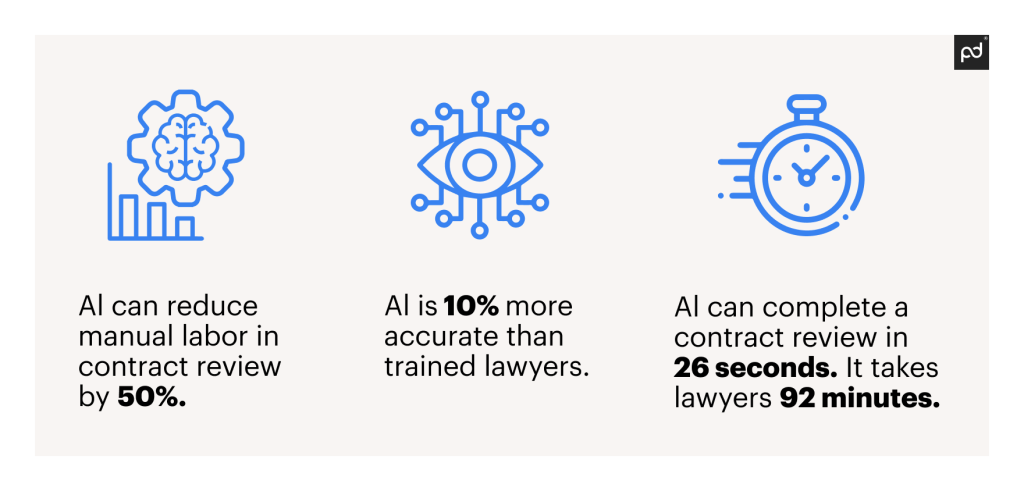
Without getting too in the technical weeds, here’s a quick breakdown of how contract AI solutions work.
We’ll use a fictitious example:
A lease needs to be drafted on your behalf with MarsWay Properties, a California real estate company, and you’re not sure where to begin.
The first thing to do is create a search prompt containing the main details, purpose, and intent of the agreement.
Example AI prompt:
I want to create a lease with a real estate company called MarsWay Properties. The company is based in California. The purpose of the lease is to acquire a space on the plaza at [insert address]. Can you help me draft a contract?
The AI contract generator will analyze the prompt to create a draft for you.
With this draft, you can now make edits and add other key details to your important contract.
If you have templates and you need to add or edit clauses to suit specific terms, you can use AI tools to generate context-relevant clauses.
Once the draft passes the review process, you can make further adjustments as needed.
AI-driven automation and cost efficiency in contract management
Contract management AI has become a key tool in improving cost efficiency and operational performance. Automated solutions reduce the manual labor typically associated with drafting, reviewing, and monitoring contracts, resulting in significant time and resource savings.
In finance, AI-driven compliance checks on contracts ensure that all agreements are compliant with regulatory standards, reducing the risk of costly penalties from non-compliance.
For example, in mortgage lending, automated testing systems can sweep through portfolios in search of regulatory violations on a daily basis, prompting quicker remediation and preventing long-term financial and reputational damage.
By integrating machine learning algorithms, these AI systems are capable of learning from past data and improving over time.
This constant learning process enables more precise contract risk assessments, allowing businesses to improve their processes and reduce workflow bottlenecks.
A report from the ABA Banking Journal underscores that automated mortgage testing alone can offset costs through reduced manual work, highlighting the long-term benefits of implementing AI solutions. 3
Regulatory considerations and AI governance
As AI’s role in contract management grows, so does the need for regulatory frameworks to govern its use. Financial institutions, in particular, must ensure that AI systems comply with existing laws.
According to the Federal Reserve and other regulatory agencies, banks remain responsible for ensuring that AI technology adheres to model risk management and other compliance standards.
These systems must be regularly tested to avoid the possibility for accidental bias or discrimination in areas like underwriting and appraisals, where AI can influence significant financial decisions.
The Biden administration’s 2023 Executive Order on AI calls for sector-specific risk assessments, emphasizing the importance of addressing AI’s potential in areas like housing and financial services. 4
By mandating that institutions provide transparency into AI’s decision-making processes, the order aims to protect consumers from unfair practices while not mitigating technological innovation, trying to balance growth and risks.
Contract review with AI
Contract AI is able to select repeated terminology and phrases. This quickens the review process.
Large Language Models (LLMs) is used by generative AI to help teach contract AI to create legal text for documents.
This helps lawyers cut down on revisions when legal language needs to be revised or entirely rewritten.
This type of review can also detect risks within a legal contract, highlighting them so they can be addressed more quickly versus waiting for a human to comb through line-by-line several times to be sure they assessed everything before beginning the redline stage.
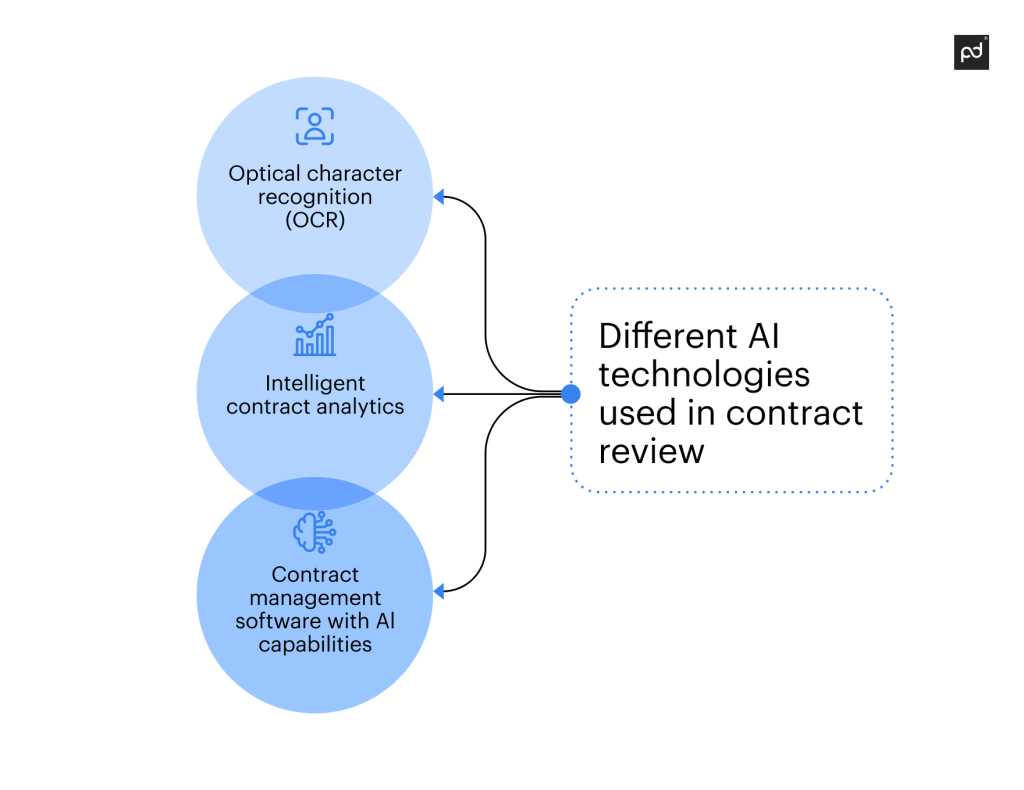
Types of AI contract software
AI contract software varies in terms of functionality.
Some are used for drafting, while others serve multiple purposes at once. Here are the various types of AI-based contract software.
- Contract drafting software for generating clauses via detailed prompts for fine-tuning and fleshing out your raw ideas.
- Contract review tools for going through the contract’s wording to ensure it aligns with your needs and initial stipulations.
- Contract data extraction software such as CobbleStone, ContractLogix, Legal on Tech, for identifying, retrieving and/or flagging essential bits of information in the contract.
- Tools like Document AI are important for extracting contract intelligence for negations and renewals because they highlight key points and red flags.
Benefits of using AI for contracts
Companies are now flocking to AI-generated contracts because they make work easier and more productive.
Here are the main benefits of using AI contract review software.
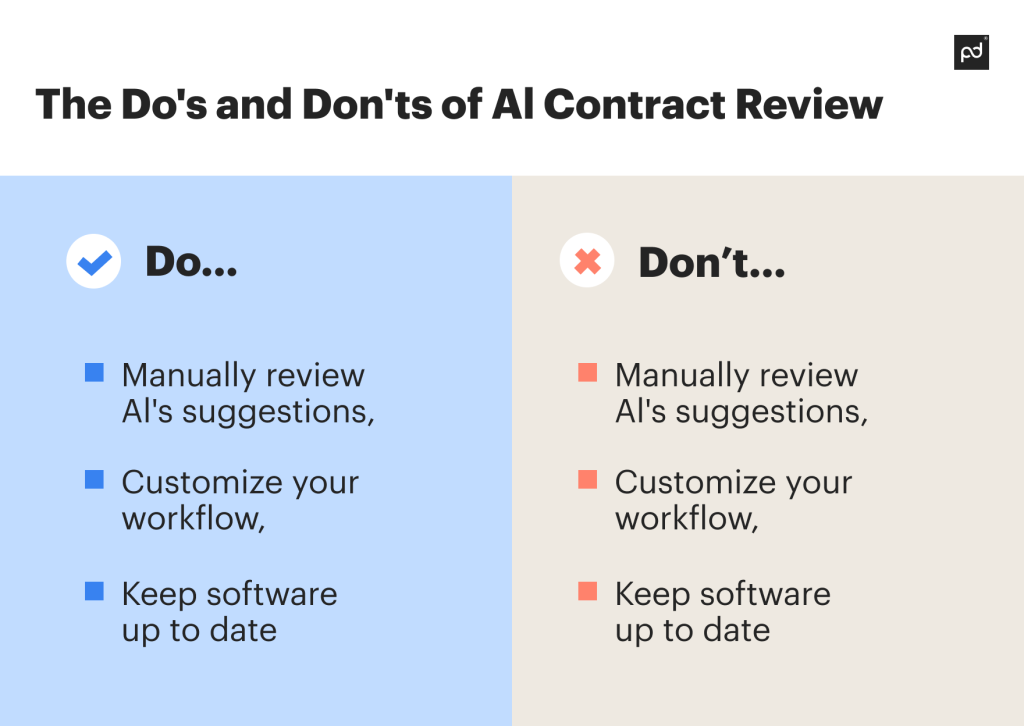
Streamline the contract creation process
AI contract solutions increase the speed of delivery by reducing the time it takes an assistant, business analyst, paralegal, or solopreneur to draft an agreement.
These advanced algorithms can scour through mountains of data within seconds to populate and deliver an almost-ready template.
You’ll just need to make a few edits before gathering all the needed approvals.
Increase the accuracy of insights
Using AI to analyze contracts makes it possible to extract data points from written agreements faster and more accurately.
First, the OCR (optical character recognition) technology goes through every page.
Then the AI analyzes every important field to decode and summarize the contents.
Help businesses save on costs
AI-generated contracts will save you money by eliminating the need to outsource legal operations and procurement.
That’s not to say you don’t need lawyers or legal teams; rather, you just have fewer billable hours since the AI has done the bulk of the work for you.
Also, small businesses and startups can use contract AI solutions to draft agreements for cooperation with service providers and for other administrative purposes.
Improves employee morale and productivity
Automating contract generation with AI will help your employees focus on other administrative and business-related tasks.
In general, AI content generation is a major step toward digital transformation.
Instead of spending time on repetitive tasks such as drafting agreements for every use case, they can use AI contract generators to automate workflows.
Challenges of AI-generated contracts
Although AI-generated agreements have several benefits, they are not without their own set of risks. Let’s go through them in detail.
Compliance and enforceability concerns
Local and federal laws are still all over the place regarding AI-generated content.
Using AI to generate contracts might be tricky in regulated industries like finance and healthcare.
This is a crucial privacy issue for companies that need to create written agreements that require feeding user data into a shared database — failure to adequately safeguard and anonymize exploitable client details poses serious privacy concerns.
Third-party risks
Speaking of feeding data into AI for contract analysis, some companies are skeptical about using AI solutions because it gives third parties access to their data.
For example, Samsung has banned employees from using ChatGPT and other unauthorized AI solutions.
This company-wide ban comes on the heels of a security breach resulting from indiscriminate AI use.
Data accuracy and bias
Contract AI tries to be neutral, but the technology has an inherent bias. Why?
Well, AI algorithms use contract intelligence to gather data from a vast repository of sources.
Since the content comes from humans, the author’s bias can creep into the terms of the agreement.
In some cases, the language model could start making things up as opposed to providing factual data.
One example that comes to mind is the case of lawyer Stephen Schwartz, who used ChatGPT to prepare case files.
The AI generated fake citations and referred to the wrong or flat-out nonexistent cases.
Dispelling myths about contract AI
As a relatively new technology, contract AI — and AI in general — has become the subject of several myths.
Some of them are true; others sound like poorly-written fiction.
Let’s dispel those contract AI myths.
Myth 1. Contract AI will replace lawyers
While AI contract management software can eliminate human error and increase the efficiency of handling agreements, this technology will not be replacing lawyers anytime soon.
If AI can’t cite the correct cases, trusting it to generate agreements unsupervised for high-value business deals might be a stretch.
Myth 2. AI is hard to implement for contracts
This misconception actually makes sense because generative AI sounds like something from the Star Wars universe.
In reality, AI for contracts works like a glorified Google search but without the stress.
With ChatGPT and similar tools, you can generate a basic agreement within seconds.
Tools like Panda AI can also provide contextual suggestions within the doc — no coding needed.
Myth 3. AI needs experts for its application
This myth is partially true.
On the one hand, you need experts to go through the AI-generated contract to make sure every detail is correct.
On the other hand, most solutions for AI agreements are plug-and-play technology, meaning anybody can use them regardless of tech expertise.
Myth 4. AI contracts are free of errors and mistakes
This one is completely false. Remember the embarrassing case of the lawyer using ChatGPT mentioned earlier?
If you want to preserve your business reputation, you need to go through every line with the meticulousness of a Swiss watchmaker.
Myth 5. Contracts created with AI close more deals
There is absolutely no guarantee that drafting your agreement with AI tools will help you close more deals.
Best practices for navigating AI contracts
Contract creation will be the next component of the AI monster wave.
But this is not a bad thing. Here are the best practices to make AI contract creation work for your business.
Know the risks
Companies should constantly assess the risk of introducing AI contract software into the workflow.
Some key considerations include data privacy, compliance, and safety.
The integration of AI in regulatory compliance is not just about efficiency; it also offers a proactive approach to mitigating risks.
AI systems are now being employed to detect deviations in non-binary areas, such as customer complaints, which helps institutions identify potential regulatory violations before they become systemic.
These advancements highlight AI’s growing role in reshaping compliance and contract management by minimizing human error, improving operational efficiency, and ensuring regulatory compliance across diverse portfolios.
Future of AI in contract management
The future of contract management AI lies in its ability to integrate into existing business processes while maintaining compliance and risk management.
With advancements in natural language processing (NLP) and process mining, AI is increasingly capable of handling more complex, non-binary tasks, such as customer complaint management.
These tools can help identify potential risks and suggest improvements to streamline contract procedures. 5
As AI technologies continue to evolve, companies that adopt them early will be better positioned to optimize contract workflows, reduce operational risks, and stay compliant in a rapidly changing regulatory landscape.
Always review the output
Whether you are drafting a contract for a merger or lease, you always need to review the AI-generated agreement details.
Doing your due diligence with the contract process will save you a lot of headaches and potential lawsuits.
Using AI solutions to work on drafts and extract vital contract data and contract analytics can save you time and expedite the negotiation process.
Be sure to research the laws and regulations of your industry and country when it comes to AI to ensure you’re always diligent and compliant.
Disclaimer
PandaDoc is not a law firm, or a substitute for an attorney or law firm. This page is not intended to and does not provide legal advice. Should you have legal questions on the validity of e-signatures or digital signatures and the enforceability thereof, please consult with an attorney or law firm. Use of PandaDoc services are governed by our Terms of Use and Privacy Policy.
Originally published October 5, 2023, updated October 21, 2024
- ABA Banking Journal. “Regulators say banks responsible for ensuring AI complies with law | ABA Banking Journal.” Show in the article ↑
- ABA Banking Journal. “Automation and AI Solutions in Risk and Compliance Testing.” Show in the article ↑
- ABA Banking Journal. “Regulators say banks responsible for ensuring AI complies with law | ABA Banking Journal.” Show in the article ↑
- White House. “FACT SHEET: President Biden Issues Executive Order on Safe, Secure, and Trustworthy Artificial Intelligence.” Show in the article ↑
- Wharton, University of Pennsylvania. “Artificial Intelligence Risk & Governance.” Show in the article ↑
